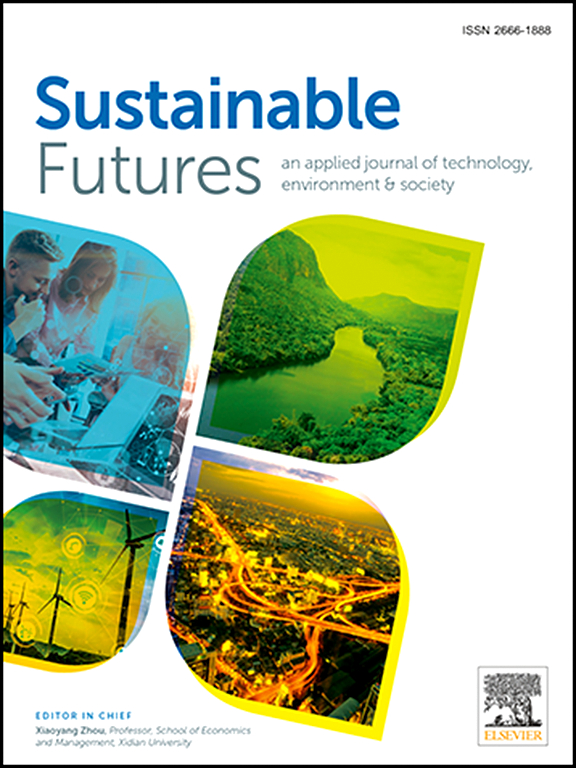京津冀城市群居民生活系统支出与生产系统碳排放效率互动研究
IF 4.9
2区 社会学
Q2 ENVIRONMENTAL SCIENCES
引用次数: 0
摘要
为了实现有利于经济和环境的区域协同效应,不仅要了解城市内部生活和生产系统之间的相互作用,还要了解不同城市之间的相互作用,这一点至关重要。在京津冀城市群,利用模糊认知图计算了9个城市居民支出与7个生产部门碳排放效率之间的影响关系。采用2012 - 2021年的时间序列数据。模糊认知图结果显示,北京市食品支出对住房支出的正向影响最大,权重为0.75。北京的食品支出对天津的居住支出的正向影响最大(0.97)。北京食品消费的增加可能会推动对天津农产品的需求。为实现可持续发展目标,应在京津冀地区制定统一的环境标准。本文章由计算机程序翻译,如有差异,请以英文原文为准。
Study on the interaction between residents’ expenditures of living system and carbon emission efficiency of production system in Beijing-Tianjin-Hebei urban agglomeration
To achieve regional synergies that benefit both the economy and the environment, it is crucial to understand not only the interactions between living and production systems within cities, but also those across different cities. In Beijing-Tianjin-Hebei urban agglomeration, the impacts between nine urban residents’ expenditures and seven production sectors’ carbon emission efficiency were calculated using fuzzy cognitive map. Time series data from 2012 to 2021 is used. The results of fuzzy cognitive map showed that in Beijing, the highest positive impact of food expenditure is on housing expenditure with a weight of 0.75. Beijing’s food expenditure has the highest positive influence on Tianjin’s residence expenditure (0.97). Increased food consumption in Beijing can drive demand for agricultural products from Tianjin. Unified environmental standards should be developed across Beijing, Tianjin, and Hebei to achieve the sustainable development goal.
求助全文
通过发布文献求助,成功后即可免费获取论文全文。
去求助
来源期刊

Sustainable Futures
Social Sciences-Sociology and Political Science
CiteScore
9.30
自引率
1.80%
发文量
34
审稿时长
71 days
期刊介绍:
Sustainable Futures: is a journal focused on the intersection of sustainability, environment and technology from various disciplines in social sciences, and their larger implications for corporation, government, education institutions, regions and society both at present and in the future. It provides an advanced platform for studies related to sustainability and sustainable development in society, economics, environment, and culture. The scope of the journal is broad and encourages interdisciplinary research, as well as welcoming theoretical and practical research from all methodological approaches.
 求助内容:
求助内容: 应助结果提醒方式:
应助结果提醒方式:


